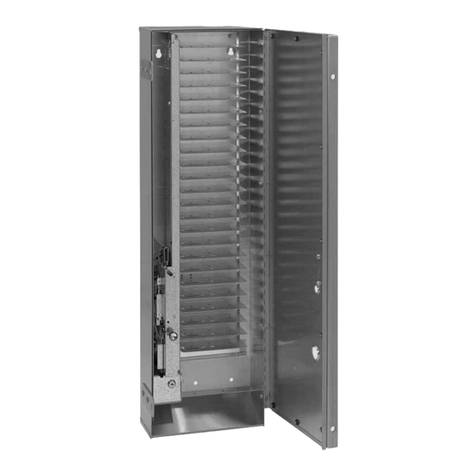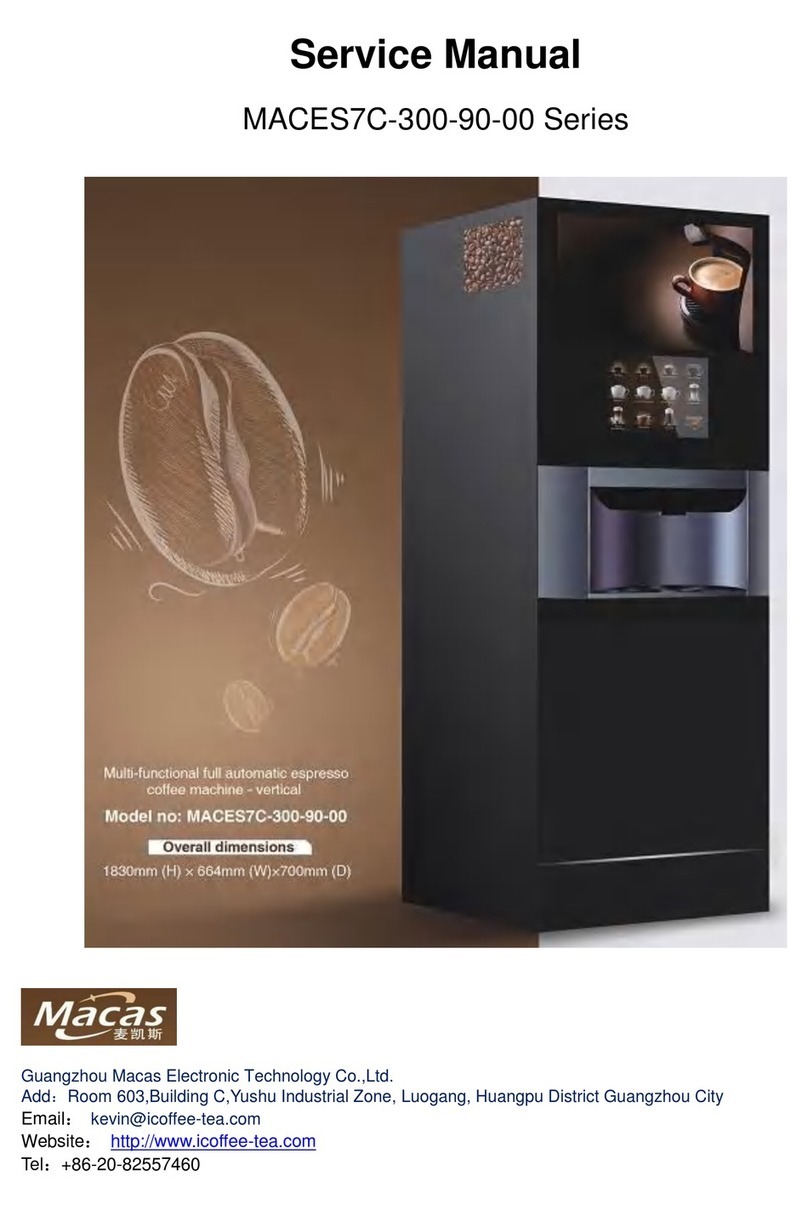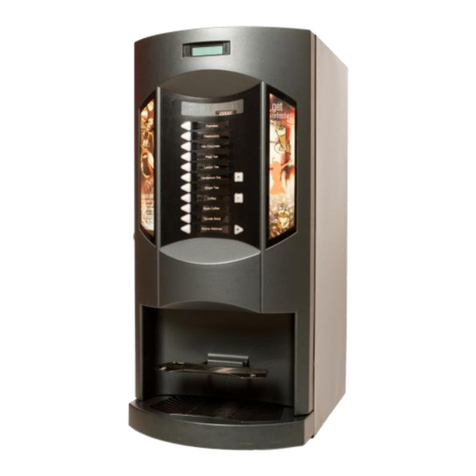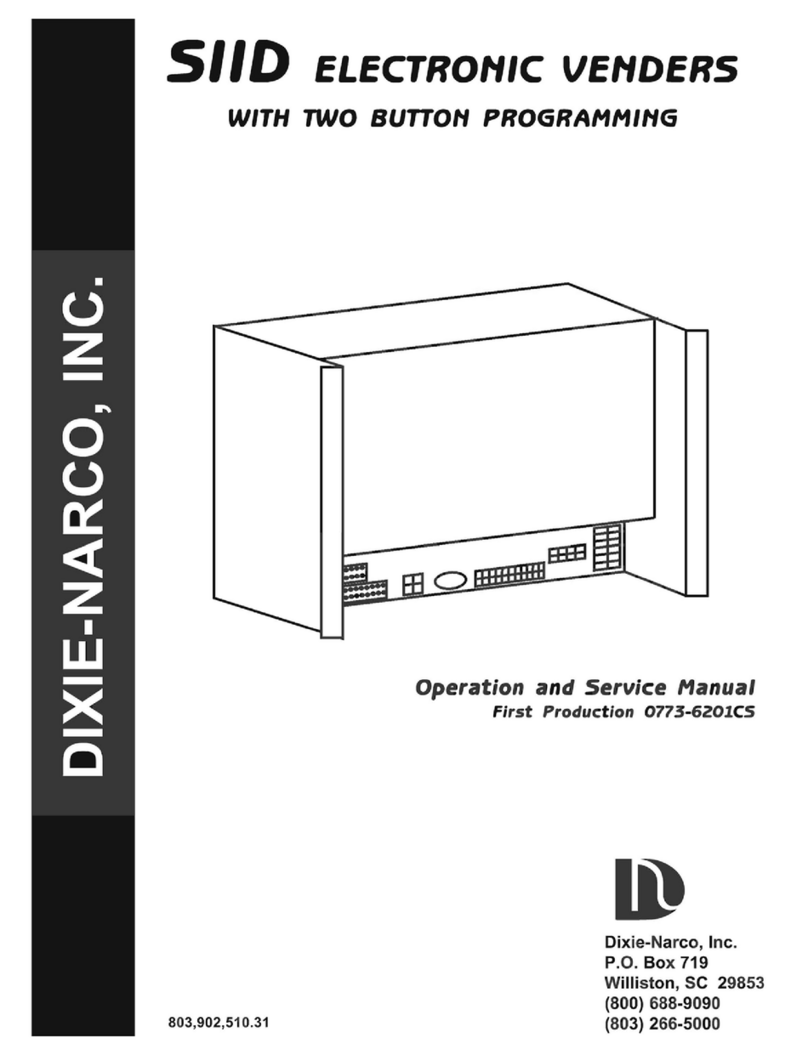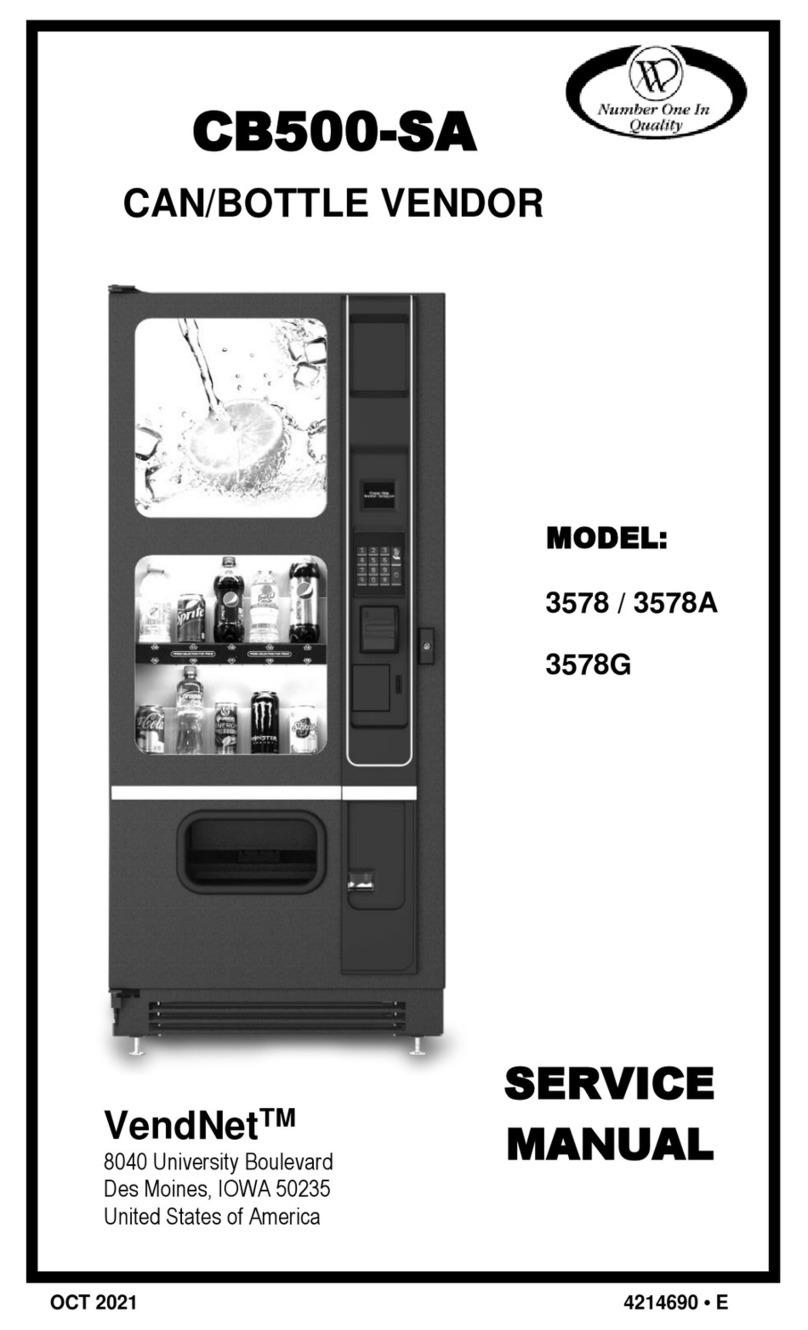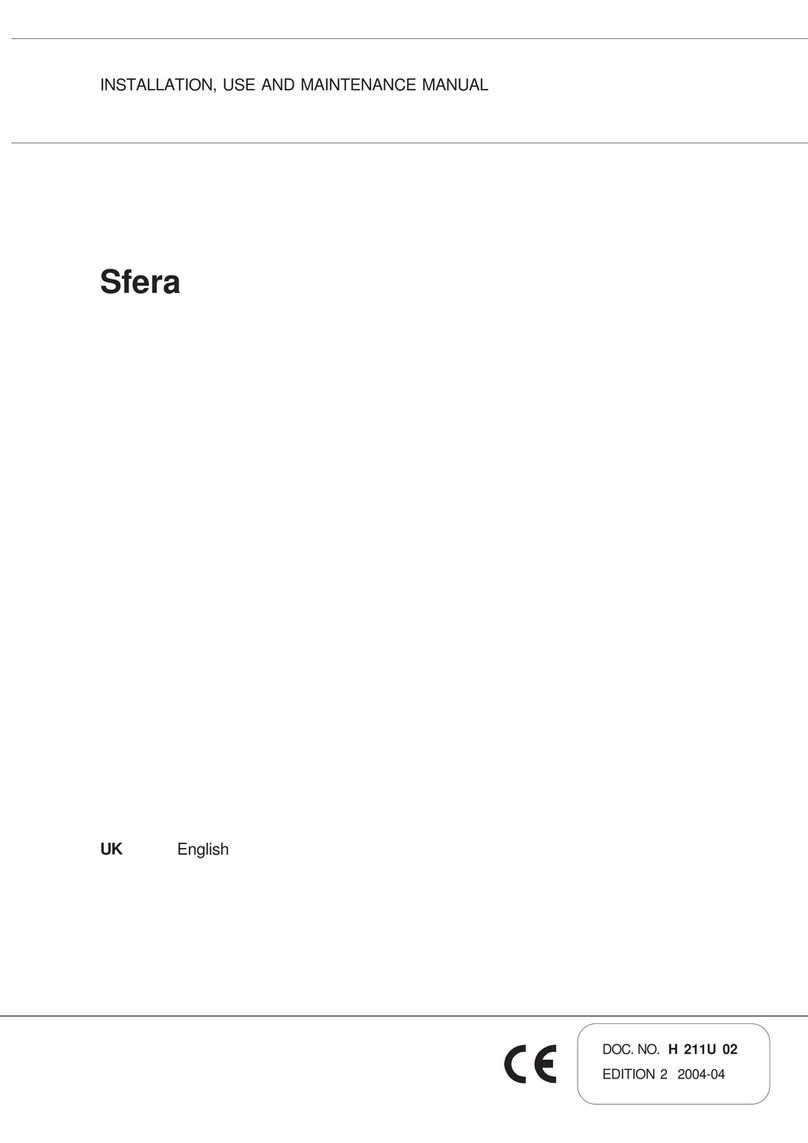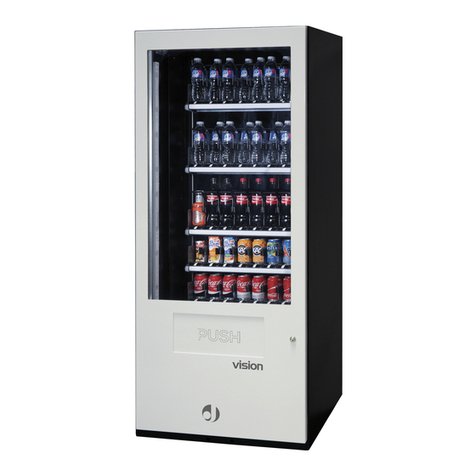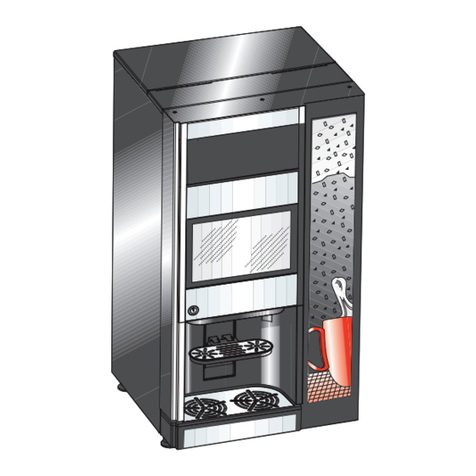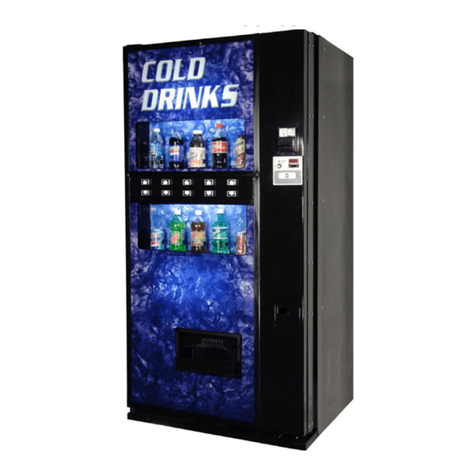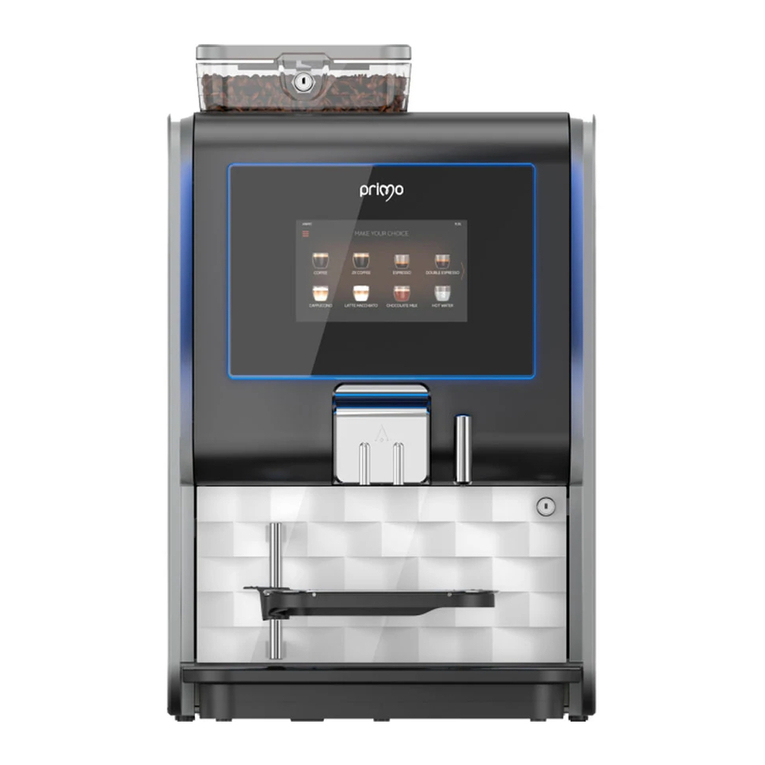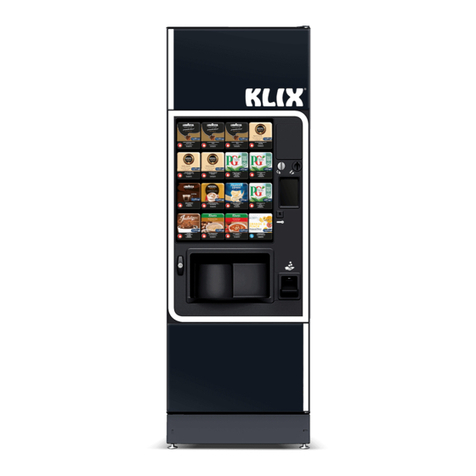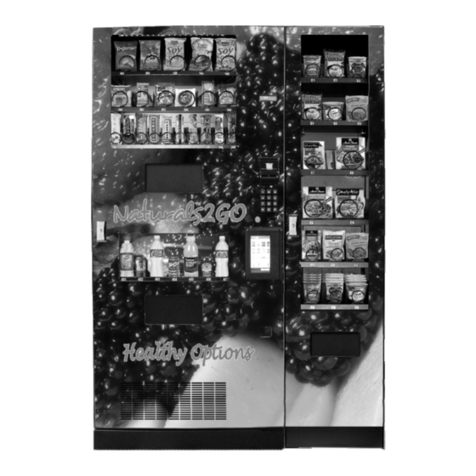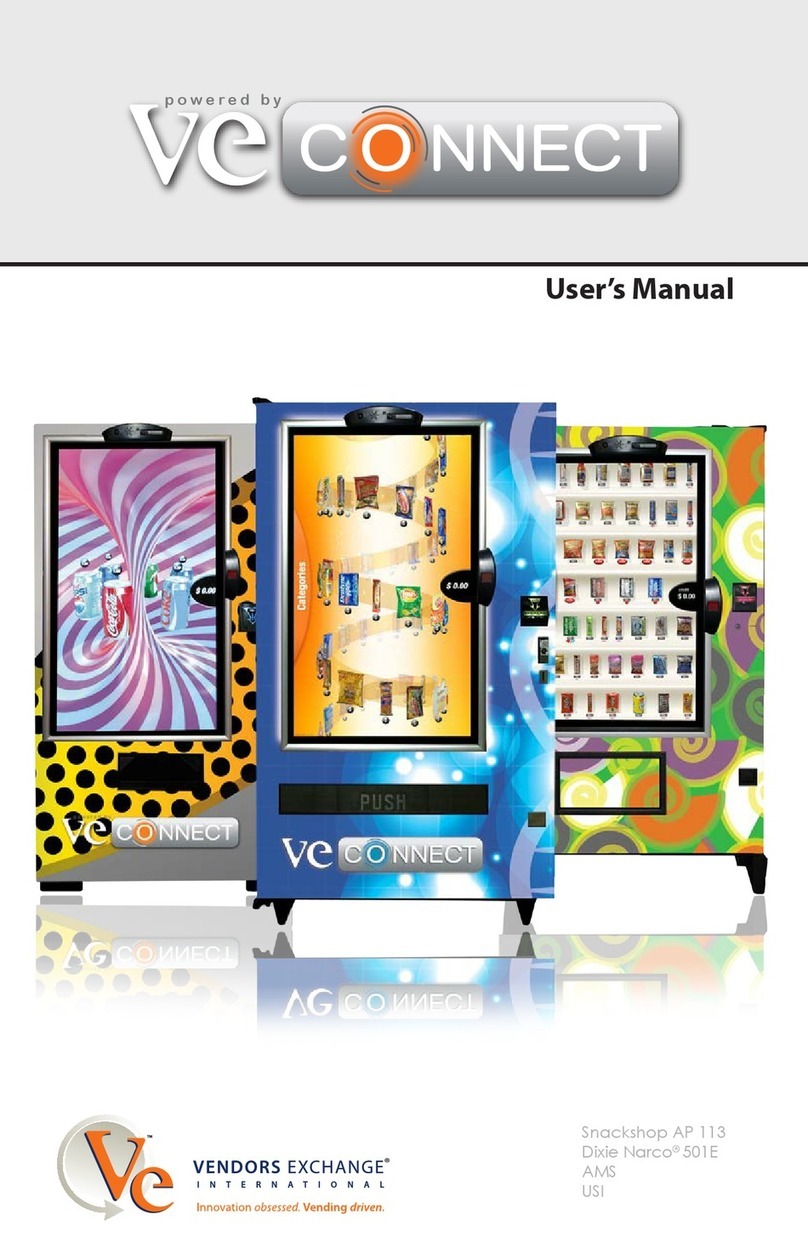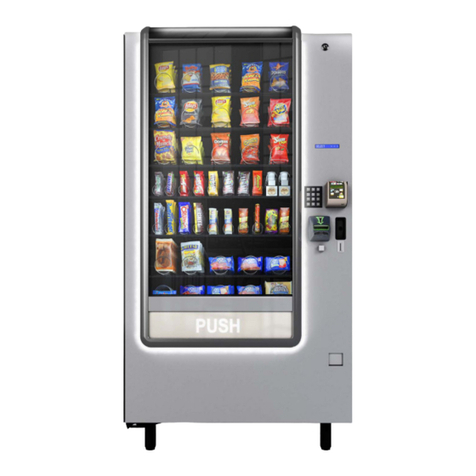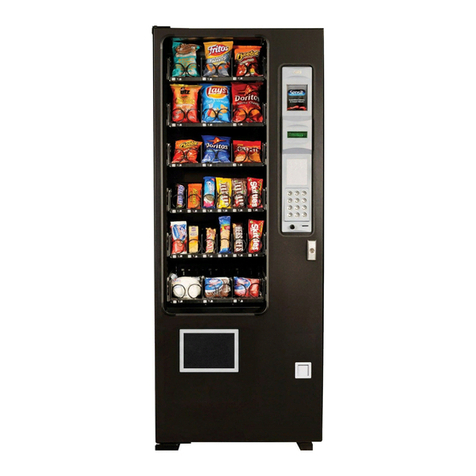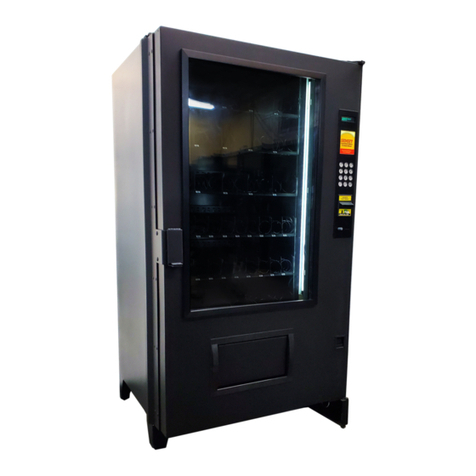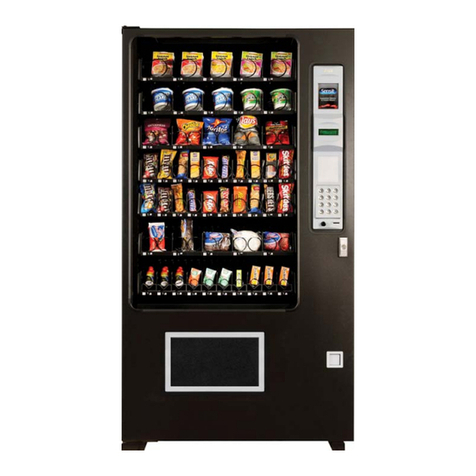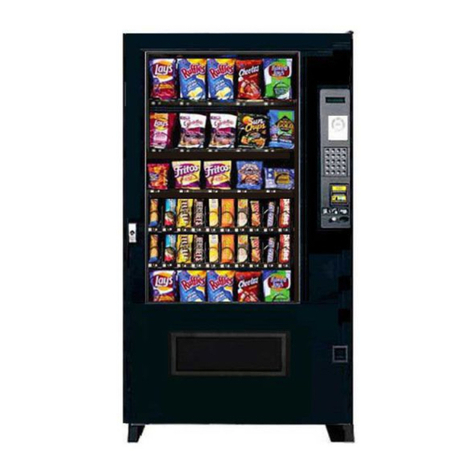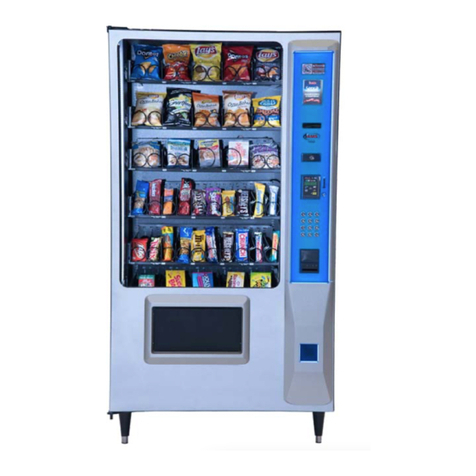
L0192A
1
Congratulations on the purchase of your new AMS Touchless
vendor. Operation is based on the time-proven AMS Sensit 3
system providing a versatile, high-capacity vending machine.
AMS machines are designed, tested, and built to provide years of
reliable, low-maintenance service in an indoor environment. A
fully insulated cabinet with flexible product configuration, a
mobile phone enabled payment system and remote pricing and
VMS are just some of the many features built into this AMS
merchandiser.
TM TOUCHLESS VENDINGTM SYSTEM
This revolutionary payment and selection system allows users to
make purchases right from their mobile device. An easy to use
mobile app allows them to see pricing and calorie information
before the purchase and then allows them the flexibility of several
different payment methods as shown here:
Users can store several payment methods in the Vagabond
system and choose among these different methods on each
vend.
SENSIT 3 SYSTEM
Your vendor is equipped with the Sensit 3 control system. The
Sensit 3 system is a patented vend-sensing system that detects
when products fall into the delivery bin. Basically, a plane of
infra-red light is created across the top of the delivery bin, and
the Sensit 3 system can detect when the light has been blocked
by a falling product. Using this technology, the vendor “knows”
when your customer gets the product. The Sensit 3 system has
several important benefits:
Guaranteed Delivery
During the vending process, if the product hangs up or an
opening was missed in loading, the helix can rotate several
additional partial revolutions to attempt to deliver the product. No
more hitting or shaking the vendor to get products that did not
fall!
Instant Refund
If the customer does not receive a product, he will be notified via
the app that the vend failed and there will be no charge made to
the account.
Adjustable Helix Motion
With the Sensit 3 system, the helix can stop as soon as the
product falls, or when the helix returns to the home position.
(See TRAY SETUP on page 22 for more information.)
Additional Benefits:
a. Opening the delivery bin door will not affect the
Sensit 3 system. The sensors are located above
the delivery bin and will not be blocked by the bin
door. Product that falls while the door is open will
still pass through the beam.
b. Shining a light at a sensor will not allow vandals to
receive free product. Any tampering which changes
the precise amount of light normally received will be
treated as a successful vend, resulting in the vandal
losing his money.
c. Disabling or blocking the sensor will not allow
vandals to receive free product. The Sensit 3
system can over-ride blocked or malfunctioning
sensors and still vend.
Figure 1.1 Typical Serial Plate
Model Number Breakdown
MODEL IDENTIFICATION
When requesting service, replacement parts or technical
assistance please copy the information found on the vendor
Serial Plate. (See Figure 1.1 above.) It is attached inside the
door near the upper right corner of the window and is visible from
the outside. The information contained on this plate is necessary
to determine what parts, kits, or maintenance should be applied
to your specific model.
1
INTRODUCTION
